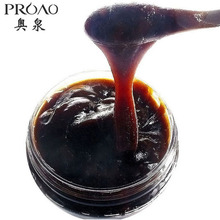Last summer, the Supreme Court launched a revolution in Second Amendment law, creating a fundamental right to carry a concealed firearm and declaring that allrestrictions on the right to keep and bear arms are presumptively unconstitutional. The majority’s decision in Bruen, taken at face value, is one of the most radical rulings in American history—a threat to thousands of state and federal laws that have stemmed gun violence for decades or centuries. It raised the question: Did the court really intend to give virtually every adult the right to carry a concealed firearm into almost any place they choose?
We won’t have to wait long for an answer. Right now, gun advocates are asking SCOTUS to block most of New York’s Concealed Carry Improvement Act—which the state legislature passed in the wake of Bruen—on the court’s infamous shadow docket. The New York law repealed the state’s now-invalid limits on concealed carry, replacing them with more rigorous screenings for permit applicants plus a list of “sensitive places” where guns remained banned. A conservative judge promptly halted the statute, gutting the screening for permits while legalizing concealed carry in hospitals, parks, zoos, movie theaters, protests, and more. But a federal appeals court reinstated the law, leading its opponents to beg the Supreme Court for emergency relief. And so, in the coming days, we will discover how aggressively the conservative majority wants to dismantle all remnants of the nation’s gun safety regime.
This mess was foreseeable from the moment Bruen came down in June. The majority opinion by Justice Clarence Thomas imposed a maximalist vision of the Second Amendment: Every restriction on the right to “armed self-defense,” he wrote, is unconstitutional unless it has “historical analogues” from 1791, when the amendment was ratified. These analogues must demonstrate a “consensus view” that the gun restriction was lawful. But how many analogues make up a “consensus”? Two? Three? Ten? And how closely must a modern gun law align with its historical analogue? Today’s firearm codes address problems that were inconceivable in 1791. Are states forbidden from banning guns on subways because subways didn’t exist 232 years ago?
AdvertisementFederal judges have grappled with these questions for six months, and the results are predictably chaotic. Since Bruen, courts have, for instance, ruled that individuals have a right to buy while under a restraining order for domestic violence, and to scratch out the serial number on a firearm, rendering it untraceable to law enforcement. After all, domestic violence wasn’t a crime in 1791 (when women were not full legal persons) and serial numbers were not yet widely used.
Advertisement Advertisement AdvertisementJudge Glenn Suddaby, a George W. Bush appointee, entered the fray this fall, when gun advocates asked him to block the Concealed Carry Improvement Act, or CCIA. From the start, Suddaby did not conceal his bias against the law. After the plaintiffs failed to explain why they had standing to challenge it—a crucial constitutional requirement—he invited them to do so. They declined to take up his invitation. So the judge dismissed the case. But he also penned an advisory opinion explaining why he would strike down the CCIA if the plaintiffs established standing. (Such advisory opinions are strictly forbidden.)
AdvertisementThe plaintiffs finally took the hint and concocted dubious reasons why they had standing to challenge the CCIA. One said the new law made it too difficult to apply for a concealed carry permit (though he had never tried). Others already had permits and claimed they wanted to take their guns into the “sensitive places” protected by the law. Suddaby swiftly granted standing and issued a restraining order freezing most of the CCIA. The 2ndU.S. Circuit Court of Appeals stayed his decision, putting the law back in place. Suddaby doubled down, issuing an injunction against most of the act. Once again, the 2ndCircuit stayed his decision. So, in December, the plaintiffs asked the Supreme Court to overrule the appeals court and enjoin the law. Now that New York has responded, a decision could come at any time.
Advertisement AdvertisementTo intervene at this early stage, SCOTUS cannot simply hold that the 2ndCircuit was mistaken: It must conclude that the appeals court “clearly and demonstrably erred” in applying “accepted standards.” If five justices reach this conclusion, then no gun restriction is safe.
Consider Suddaby’s ruling: The judge struck down New York’s ban on concealed carry in public parks, zoos, airports, buses, houses of worship, bars, conference centers, banquet halls, protests, and many medical facilities, including addiction treatment centers. He also invalidated a provision of the law that stopped permit-holders from taking their weapons onto private property, like businesses or homes, unless the property owner expressly consented to their presence. Finally, Suddaby struck down a requirement that permit-holders show “good moral character” (which means they have no “demonstrated propensity to misuse firearms”), as well as a requirement that they disclose whether they have children in the home (despite the persistent and devastating problem of unintentional child shootings).
Advertisement AdvertisementSuddaby’s reasoning ranges from curious to laughable. He admitted that he did his own research rather than rely exclusively on the parties’ briefing, and it shows. Speculating about the history of allowing guns into zoos, Suddaby wrote that he could “imagine some of the more trepid zoogoers of the time demandingto be armed in the presence of the more dangerous creatures.” (Result: The Second Amendment protects the right to carry guns in zoos.) He made up, out of whole cloth, the possibility that state agents might require permit applicants to submit a urine sample (which appears nowhere in the New York law) just so he could strike it down.
Advertisement AdvertisementSuddaby’s efforts to find historical “consensus” were even wackier. At first, he demanded three or more historical analogues, because two “can also appear as a mere trend.” Later, the judge shifted his method, giving “more weight” to old laws in states that made up a “larger percentage of the nation’s population at the time, according to the nearest decennial census.” So laws governing Maine and Rhode Island cannot establish a consensus, but laws governing Virginia and Pennsylvania can. (Maybe!)
AdvertisementThis is not constitutional law and barely pretends to be. And yet it is difficult not to feel a milligram of sympathy for Suddaby. The Supreme Courtset him up to fail: In Bruen, Clarence Thomascherry-picked historical facts with almost boastful recklessness, making up Calvinball rules like “laws in federal territories don’t count” to throw out evidence that contradicted his preferred outcome. That’s one reason why Judge Carlton Reeves recently floated appointing a historian in a Second Amendment case, since courts “lack both the methodological and substantive knowledge” necessary to extrapolate from the ambiguous, incomplete record.
Recently in Jurisprudence
- By Trump’s Lawyer’s Logic, He Really Could Get Away With Murder!
- Trump Has Always Been a Caricature of a Particular Type of Villain. It’s on Full Display Right Now.
- Sure Sounds Like the Supreme Court Is About to Give Trump a Big Win!
- A Supreme Court Justice Gave Us Alarming New Evidence That He’s Living in MAGA World
At the very least, the Supreme Court could allow lower courts to wrestle with Bruen for a time before wading in once again. The court typically lets new issues “percolate” in the courts before resolving them, under the theory that “the airing of competing views” can aid its “own decisionmaking process.” New York gun advocates want to stymie that process by persuading SCOTUS to kill the CCIA right now, short-circuiting both “percolation” in the lower courts as well as states’ experimentation with new gun laws after Bruen. Rewarding them would only sow more confusion about the appropriate standard for Second Amendment challenges, indicating that the law changed even more radically than Bruen admitted. It would also break a promise that Justice Brett Kavanaugh made in a concurring opinion joined by Chief Justice John Roberts, which insisted that thorough “licensing requirements” remain lawful, as do limits on guns in “sensitive places.” (Perhaps the only gun-free zone that Kavanaugh and Roberts accept is their own courthouse.)
Advertisement Advertisement AdvertisementThe Supreme Court will, at some point, need to clean up the mess it made in Bruen. Right now, however, the worst thing it can possibly do is act over the shadow docket to turbocharge the Second Amendment without oral argument, full briefing, or even a decision from the appeals court. Stricter limits on concealed carry, like those passed by New York, are proven to save lives. Striking down those limits will lead to more violence, injury, and death. The Supreme Court has no business inflicting that bloodshed because a handful of disgruntled gun owners are too terrified of New York City to go anywhere without packing heat.
Tweet Share Share Comment







